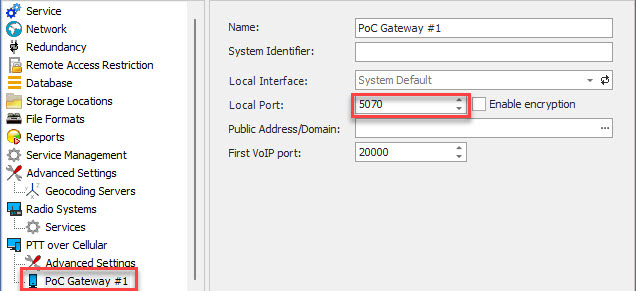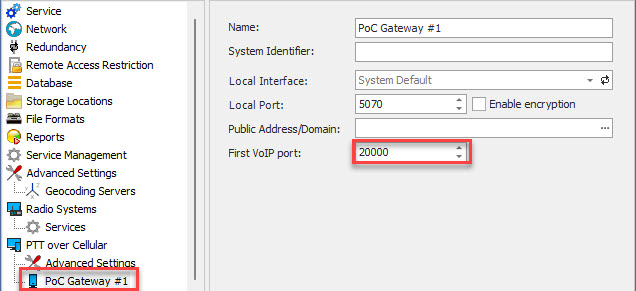Mobile Client Performance & Compatibility
| Server Version | App version | Encryption | Max Delay | Jitter | Packet loss |
|---|---|---|---|---|---|
| 6.0 and newer | Android ; iOS | TLS (AES-128) | 400 ms | 50 ms | 2% |
| Unencrypted | 2900 ms | 50 ms | 2% | ||
| 5.7+ | 3.3.135 (APK) | — | 2900 ms | 50 ms | 2% |
| 5.3.5–5.7 | 3.3.135 (APK) | — | 800 ms | 100 ms | 3% |
| 5.2 and older | 1.3.0 (APK) | — | 200 ms | 100 ms | 2% |
While unencrypted connection allows up to 2900ms of Delay, enabling TLS (AES-128) imposes a limitation on the quality of networks, allowed maximum Delay is up to 400ms.
TRBOnet Server ports consumption details
All ports are to be opened on the TRBOnet server side on router\firewall.
For the first connected mobile client:

VoIP ports (Advised Cisco RTP port default range starts from 20000):

Total ports: 5070 + up to 6 consecutive VoIP ports, starting from 20000.
For the second connected mobile client:
Added: +2 new ports compared to the first client.
Total ports: 5070 + 8 UDP from VoIP range.
For 100 connected mobile clients:
Added: +200 ports in total (2 ports per client × 100 clients).
Total ports: 5070 + 208 UDP from VoIP range.
TRBOnet versions before 6.0 did not share ports for Group subscription between different Mobile clients, opening a +1 port for each Mobile client group subscription.
3G/4G/LTE use cases with latest Android Mobile client version available
Audio quality depends on Broadband cellular network provider signal quality.
Below cases are performed in ideal conditions within full 3G/4G/LTE Network signal strength.
Server connection successful rate is acceptable.
Successful outgoing voice transmissions rate about 99% of overall transmissions rate.
Server connection successful rate is excellent.
Successful outgoing voice transmissions rate is 100% of overall transmissions rate.
Information about Mobile Network types meaning.
